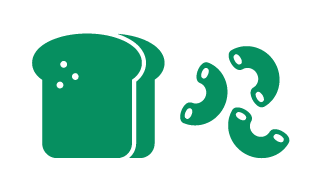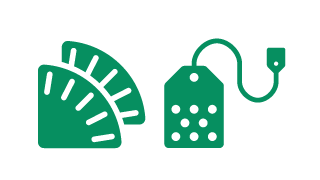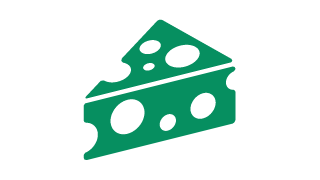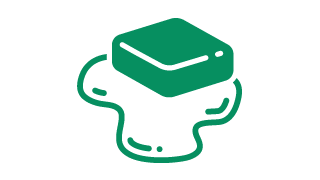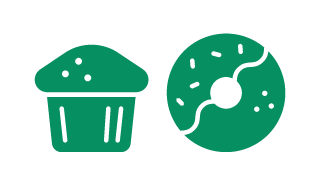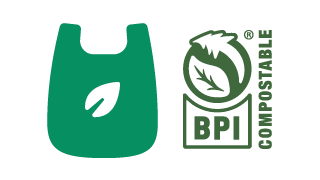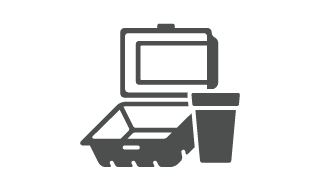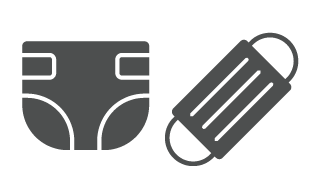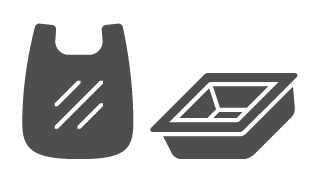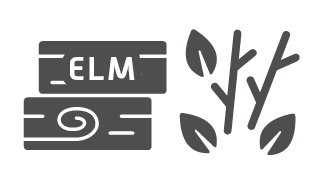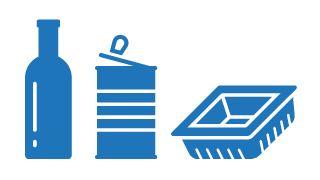Curbside Organics (Green Cart)

Colder temperatures may prevent some green carts from being fully emptied. Materials can freeze and stick inside the cart.
To help reduce this issue:
- Line your cart and layer your waste with recycled newspaper, paper bags or old pizza boxes.
- Set your cart out at every collection, even if it's not full.
- If things get stuck or frozen, use a broom or shovel handle to loosen them.
Check your collection calendar and sign up for reminders or download the Saskatoon Waste Wizard app. Note that black cart collection will continue as biweekly, even in the summer months.
Placement and Collection of Your Green Cart
All green carts are collected from the same location as your blue and black carts.
Note, for some previous green cart subscribers this is a switch from front street to back lane if their blue and back carts are collected in the back lane.
Cart usage, placement, and maintenance will be the same for the green cart as your blue and black carts. See saskatoon.ca/cartcare for more information on cart care and placement for successful collections.
What goes in your Green Cart?
Use the Saskatoon Waste Wizard app to check if an item should be put into your blue, green or black cart, or if it’s appropriate for drop off as hazardous waste.
The new city-wide green cart program will have an increased service level, accepting more food and yard waste as well as being collected year-round, than the previous subscription service.
Do not use plastic bags. Please place your yard and food waste directly into your green cart or use a BPI-certified compostable or 100% paper bin liner.
Watch Educational Video Series
Items in GREEN are acceptable for your new green cart:
| (yogurt, butter and cheese) | |
|
|
Items in BLACK or BLUE are NOT acceptable for your new green cart:
How do I use the kitchen pail?
A kitchen pail starter kit was delivered to all eligible households (including past participants of the subscription program). The kitchen pail included important program information and a roll of Biodegradable Products Institute (BPI) certified compostable pail liners.
Keep your kitchen catcher in a convenient place, such as under your sink. Before filling your kitchen pail with food scraps, you may choose to line it with one of the provided bags or use a paper liner to reduce moisture and odors. Only BPI-certified compostable or paper liners can be used. Just scrape your plate or cutting board! The kitchen catcher is a convenient way to divert food waste directly in your kitchen.
Frequently Asked Questions
What if contents are sticking or freezing to my cart?
Here are some tips to prevent and deal with content that may have become stuck or frozen in your green cart:
- Line your cart and layer your waste with crumpled-up newspaper, paper bags or soiled pizza boxes.
- Use the end of a broomstick or shovel to stir and loosen up material at the bottom of the cart.
- Put your cart out for every collection, even if it’s not full.
Food & yard waste tips:
- Wrap food with high moisture content in soiled boxes or newspapers.
- Strain excess liquid from soups and sauces with a strainer and only place the solid pieces in the cart.
- Wrap food with high moisture content in soiled boxes or newspapers.
- Put grass clippings in paper yard waste bags.
Cold weather tips:
- Don't force the contents of the cart down.
- If possible, give your cart a shake prior to rolling it out to dislodge any frozen contents.
- Consider leaving your food waste in another container to allow it to freeze before putting it in your green cart.
How can I reduce odours and insects?
Indoors:
- Collect food waste in your provided kitchen pail or a small container with a lid. Store it inside a cupboard, underneath your sink or outside your backdoor. Ensure the lid is fully closed.
- Line your container with BPI-certified compostable or a paper liner, or simply wrap food in a newspaper or napkin to reduce moisture. Please do not use waxed, plastic, plastic-lined, or any non-certified BPI compostable or biodegradable bags.
- Drain excess liquids, excluding cooking oil, from your food waste before placing in the container.
- Freeze smelly food waste until collection day.
- Empty the contents of your kitchen pail or container into your green cart as frequently as necessary.
- Rinse your kitchen pail or container after emptying it into your green cart.
- Sprinkle baking soda in the bottom of your kitchen pail or container to reduce odours and deter insects.
- Catch fruit flies in a bowl of vinegar covered with plastic wrap, pricked with a few holes.
Outdoors:
- Set your cart out for every collection, even if it isn't full.
- Store your green cart outside in a shady, flat and ventilated location and keep lid fully closed.
- Line your cart with newsprint, cardboard or yard waste before adding food waste.
- Covering food waste with yard waste will help prevent odours and insects. Keep the contents of your cart dry by alternating a layer of food waste with a layer of dried leaves, grass clippings, or dead plants.
- Let leaves, grass and yard waste dry out first before placing them into your cart.
- Rinse your green cart occasionally with a garden hose. Pour contents onto your grass or gravel (never down the storm drain). Sprinkle a small amount of vinegar or baking soda into your green cart to reduce odours.
- If animals chew on the bin, rub peppermint oil, hot sauce, cayenne or chili powder on the chewed spot to deter other animals.
What if my cart is filling up too fast?
If your green cart is filling up before collection day, try following these simple tips:
Tips to reduce yard waste and create a healthier yard:
- Keep your grass clippings on the lawn to add nutrients and retain moisture, also known as “grasscycling.”
- Work leaves directly into your garden soil or use them as mulch on your garden beds.
- Take excess yard waste to one of the City's compost depots free of charge.
- Compost excess yard waste using a backyard composting system.
Tips to reduce food waste:
- Get creative: look for recipes that use foods you already have on hand.
- Shop smart: don’t buy more food than you can eat before it starts to spoil.
- Store foods correctly so they last longer.
- Look in your fridge, freezer and pantry before grocery shopping so you only buy what you need.
- Create an “Almost Expired” section in your fridge and pantry to store items that have to be used quickly. Start your meal planning by looking through these items.
- Freeze food for later use.
- Keep track of what you throw away to get an idea of how much food you could be saving.
- Compost excess food waste at home, by using a backyard or indoor composting system.
Green cart still filling up before collection day? Order a second cart for an additional fee by contacting Corporate Revenue: 306-975-2400 or revenue@saskatoon.ca.
What size is the kitchen pail?
The kitchen pail has the capacity of 8L, dimensions as follows: length 11.5" x width 8.5" x height 9.25".
What if I already compost? Why is the program city-wide?
It’s great that 23% of people compost at least some of their waste at home, however, it’s not for everyone, so we still need city-wide program to capture the remaining material going to landfill. The city-wide program will still be useful to home composters, as it accepts all the other food and yard waste that cannot be easily composted at home (e.g., meat, dairy, dressed salads) and also provides more capacity for material, which can be especially helpful during the heavy yard waste season.
| Items | City-wide Green Cart Program | Discontinued Subscription Based Green Cart | Backyard Composting | Compost Depot |
| Meat & seafood | ✓ | X | X | X |
| Dairy products | ✓ | X | X | X |
| Bones | ✓ | X | X | X |
| Solidified fats on mixed table scraps | ✓ | X | X | X |
| BPI certified pail liners | ✓ | X | X | X |
| Fruits & vegetables | ✓ | ✓ | ✓ | X |
| Eggs & eggshells | ✓ | ✓ | ✓ | X |
| Bread, noodles & grains | ✓ | ✓ | ✓ | X |
| Coffee grounds | ✓ | ✓ | ✓ | X |
| Food soiled paper | ✓ | ✓ | ✓1 | X |
| Unbagged yard waste | ✓ | ✓ | ✓2 | ✓ |
| Tree trimmings (over 60cm in length) | X | X | ✓ | ✓ |
| Tree trimmings (over 2cm in diameter) | X | X | ✓ | ✓ |
| Elm wood3 | X | X | X | X |
| 1This item may be better suited to the green cart 2Excess can go into the green cart 3Elm wood must be disposed of at the landfill | ||||
Curbside programs can work together with other waste diversion programs, such as home composting, to achieve efficient, large-scale waste diversion.
The City continues to support home composting through the compost coaching program, including rebates for home compost bins and support troubleshooting issues.
Where are the collected materials being processed?
Since the program launch, green cart materials have been composted by Loraas at their facility north of Saskatoon. 1% of loads collected have been sent to landfill due to contamination.
In addition to continuing to haul organics materials to Loraas for processing, the Administration is pursuing options to temporarily process a portion of the materials at the Saskatoon Regional Waste Management Centre and West Compost Depot.
The City will continue to divert organics away from the landfill to make a beneficial use product and reduce greenhouse gases from waste. As of the end of October 2023, more than 15,000 tonnes of organic waste have successfully been diverted from the landfill since collections began in May. No disruptions to the curbside organics program are expected.
What if I already use my garburator / garbage disposal for food scraps?
Garburator/garbage disposal are not effective ways for waste diversion as this process simply displaces the waste by having it go through the wastewater treatment process, which has adverse effects on the system itself. Any materials sent through this system are either screened and landfilled or mixed with biosolids to create a lower-quality soil amendment product than what is possible with direct organics processing through the green cart program. In addition, garburators use lots of water which costs residents money and disposal of fats, oils and greases (FOGs) in the sewers leads to higher maintenance requirements.
What is the monthly fee and what is it used for?
Residents are charged per household per month on their utility bill. To learn more, visit Waste Utility Rates.
The monthly fee covers:
- Collection of food and yard waste from your home
- Sorting and processing (composting) of material
- Providing cart maintenance
- Education, bylaw and program support
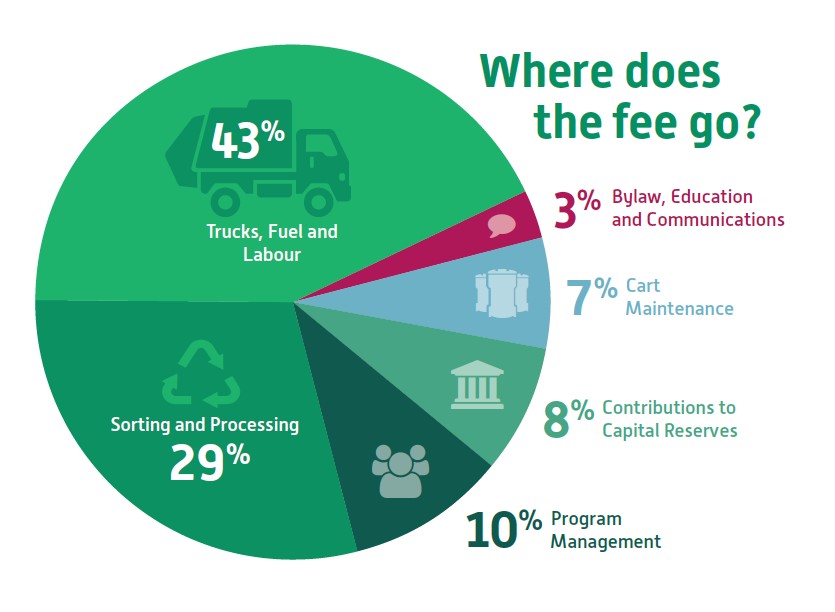
What if I don't want my green cart?
Waste management and diversion are community-wide issues, which require community-wide solutions. We need all residents to recycle and compost. Universal participation in diversion programs is essential to reducing waste going to landfill and to achieve our goal of 70% waste diversion.
Research has shown that optional municipal programs cost more, have a lower participation rate and do not achieve the same level of diversion as universal programs. The utility fee is applied to all eligible households so that everyone shares in the cost. This keeps the program affordable for everyone.
Residents can choose to opt-out of green or blue cart collection and refuse their cart, however the fee will remain. Submit a cart refusal by calling Corporate Revenue at 306-975-2400.
Why aren’t you accepting pet waste or diapers in the green cart?
While other municipalities have chosen to accept pet waste or diapers in their green cart programs, the City made the decision not to include them in our program at this time because it is a challenging material to accept as the finished compost may not meet (fecal coliform) standards outlined for Category A compost. Pet waste can also be challenging to process because it is often bagged, which can lead to plastic bag contamination if residents are not diligent in using compostable bags. Diapers contain a lot of plastic that would need to be removed and landfilled during processing.
Once operational, the composting of additional materials can be tested within the composting facility to determine the ability of additional materials to fully breakdown, as well as impacts on contamination rates and meeting the Category A compost standard.
Can I put noxious weeds in my green cart?
As per the City’s Waste Bylaw, nuisance, noxious and prohibited weeds prescribed by the provincial Weed Control Act are not considered organic material and should not be placed in your green cart. There are some weed seeds that are very resistant to composting as they can tolerate the high temperatures. In order to prevent the spread of regulated weeds, please bag and place in your black cart. If you are unsure if the weed is regulated, please visit saskatoon.ca/weedcontrol for more information.
Will the contents of my green cart catch fire?
No, only if it is set on fire. As organic materials break down during the composting process, they create heat. However, the heat generated is never great enough to ignite the materials approved for disposal in green carts.
The City of Saskatoon is aware of a social media post regarding a green cart fire. The City has not received any reports regarding fires in green carts.



